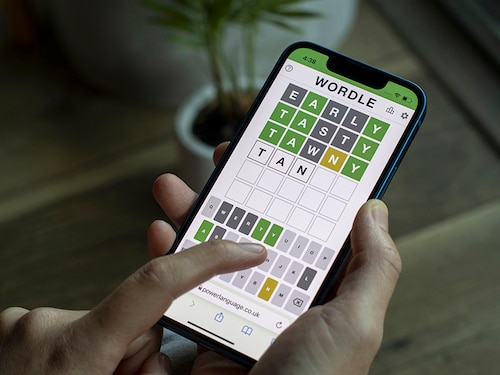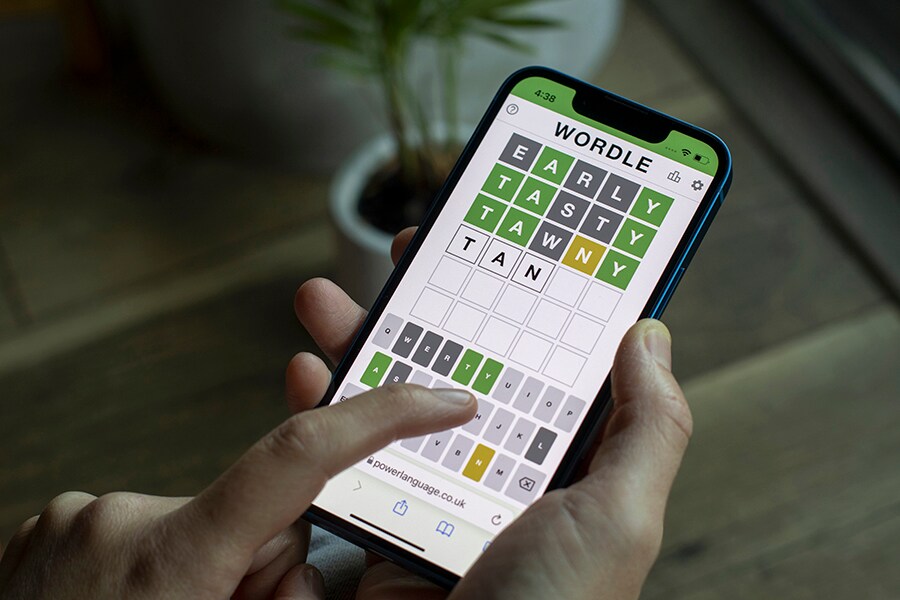Storyboard18 - Have you got game?: The message in Wordle's sensational rise
How Wordle can teach brands to hurdle over the competition


 Image: Shutterstock
Image: Shutterstock
Tap. Swipe. Click. Share. Our lives today are a collection of imagined sounds. None of them is as sweet as the one sound we’re all accustomed to enjoying even without hearing it.
The sound of the ‘penny dropping’. Arriving at the right answer after wrestling with options. Exulting within at the deciphering of clues.
The digital world’s latest viral sensation, Wordle, is another descendant in a long lineage of games that have boosted some egos every day while befuddling others.
Its ancestors like Scrabble, Pokemon Go and Sudoku have captured the popular imagination at various times. Each carving a notch on the popular psyche. Each becoming a brand in its own right. Makes you wonder what brands can learn from these phenomena that give their consumers daily frissons of delight.
For one, they can do what every brand should aspire to but often falls short of achieving. Look past the tirelessly repeated but often misinterpreted term ‘gamification’ and you realise that observant brand builders can come away with a few simple truths worth pursuing.
Our brains are prediction machines. Few questions obsess it more than ‘what’s next?’ We’re constantly looking around the corner, checking, hoping that the world meets our expectations. This is why Amul, a legendary brand that sells commodity products manages to create greater anticipation for its ‘topicals’—the delicious calories it lavishes us with. When momentous events occur, or even noteworthy ones, we know that the lovable, cherubic Amul girl will have a uniquely humorous take. One that will always be a clever play on words and visuals that will fall together in our minds in just the right way when we ponder it.
The one thing humans treasure, more than their childhood photos, is the series of minor achievements we collect for ourselves now and then. Yes, they’re inconsequential. Yes, nobody else is impressed by them. But the gush of dopamine that floods our brains when we crack a riddle, puzzle or cipher is a glorious reward. Not only does it make us feel pleasure, but it also creates a momentary cloudburst of ‘surprise’ that primes us to learn. Our desire for ‘cognitive complexity is a real, felt need that few brands manage to leverage and even more should. Casper, the mattress brand, actually created a series of pictorial puzzles they placed inside train compartments. Try it—some of them need Holmesian levels of deduction!
More than anything, games allow us to be part of the larger collective. Few psycho-social needs are more important. Even fewer provide the surge of oxytocin that makes us feel loved and accepted. Hopping on the bandwagon, responding to social proof and comparing Wordle results on Whatsapp when you arrive at an answer faster than your friends has mood enhancing benefits few will admit to and many can’t deny. Zoom out from puzzles on your smartphone, and you see much the same effect is replicated. Whether it is a marathon where your type-A personality makes you compare your timing as you run alongside your colleagues. Or whether it is a bike ride as part of a motorcycle brand’s activation. Our desire to simultaneously be part of the collective while also standing apart makes games the ideal avenue for participative glory.
Put it all together and what you have is what choice architects and decision scientists call a "habit loop."
The ‘cue’ occurs at a predictable frequency. The ‘routine’ creates a physical or mental response. And the ‘reward’—a payoff that tells your brain that this is something worth repeating in the future.
It’s no surprise that the New York Times has paid an undisclosed seven-figure sum to acquire the game from its creator. Think of all the brands that have built outsize value in the last few decades—Nike, Google, Apple—and you will see that they have tried to incorporate these principles, in one way or the other, into their product architecture and brand programmes.
Now check their market capitalisations. It doesn’t take deft puzzle-solving skills to understand why the ‘penny drop’ they enable amongst ardent users invariably finds its way to their bottom lines too.
Adrian Terron is Vice President, Corporate Brand and Marketing at the Tata Group. Views expressed are personal.
First Published: Feb 02, 2022, 19:26
Subscribe Now